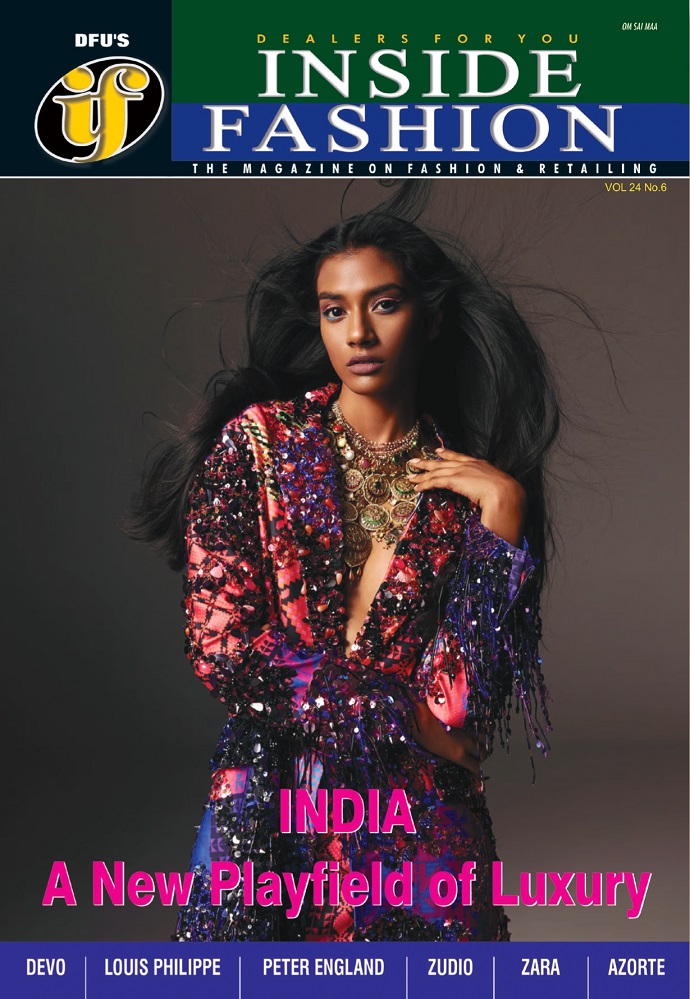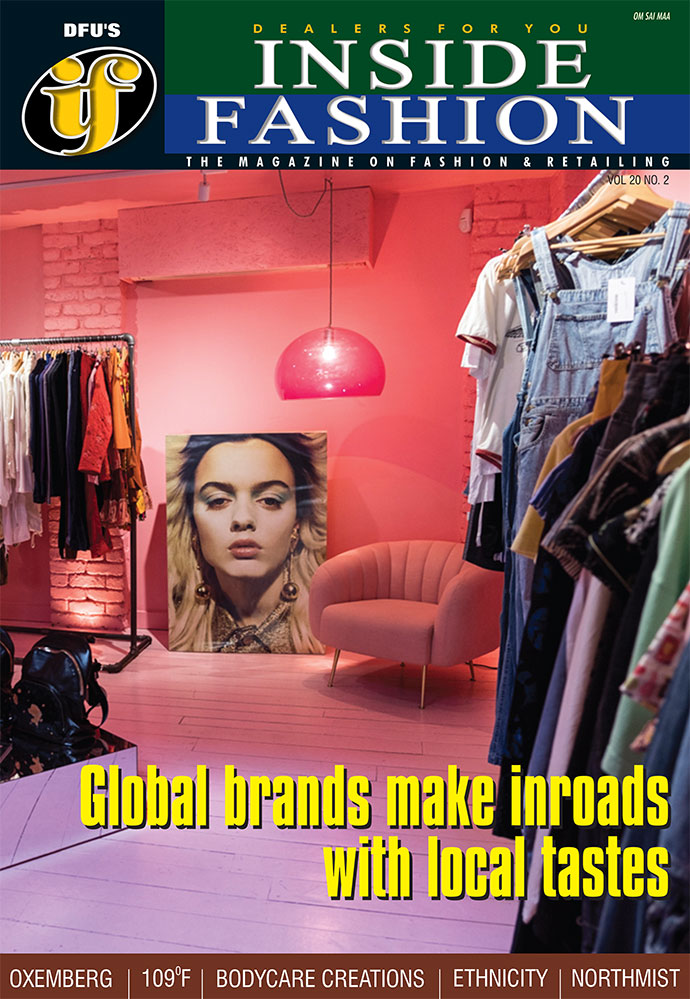Mobile & ethnic wear boom despite search dip in Indian fashion, finds Techmagnate

India's dynamic women's fashion market presents a complex picture of evolution, marked by subtle shifts in overall consumer search interest alongside significant growth in specific categories and platforms.
A recent Search Trends Report FY25 by digital marketing agency Techmagnate highlights these trends, revealing a market where mobile shopping gains prominence and ethnic wear captures significant consumer attention. It shows, while overall online search volume for women's wear has seen a slight dip, the data reveals compelling trends that are reshaping the industry.
Overall market pulse and marketplace dominance
The report indicates a slight cooling in broad online searches for women's wear. Total search volume experienced a 6.68 per cent decline, falling from 770.55 lakh in FY 2023-24 to 719.10 lakh in FY 2024-25. This suggests a potential minor decrease in general consumer query volume or a shift in how consumers are discovering fashion items.
Despite this overall dip, the major online marketplaces continue to be the primary destinations for branded fashion searches. The top five players – Meesho, Myntra, Flipkart, Amazon, and Ajio – collectively dominate, accounting for over 97 per cent of the total branded search volume, underscoring their crucial role in the digital fashion ecosystem.
"The women’s fashion market in India is going through a dynamic transformation," confirms Sarvesh Bagla, Founder and CEO of Techmagnate. “The trends and the industry are evolving rapidly, driven by changing consumer preferences, technological advancements, and the growing influence of social media and global trends.”
The rise of mobile-centric shopping
A compelling trend highlighted by the data is the definitive shift towards mobile commerce. Even as search volumes fluctuate for individual platforms (one major marketplace saw a 32.14 per cent drop in search queries), the appetite for app-based shopping is growing significantly. The same marketplace witnessed a robust 16.44 per cent increase in app downloads, surpassing competitors like Flipkart, Shopsy, Amazon, and Myntra in app growth.
This divergence points strongly towards consumers increasingly favouring the convenience, personalization, and user-friendly interfaces offered by dedicated mobile fashion apps over traditional web searches. Bagla emphasizes the need for businesses to adapt, stating, “Contemporary consumers conduct queries on women’s wear, evaluate their options, and make their decisions; because of which, a holistic understanding of search behavior is essential for a better digital marketing roadmap.”
Brand landscape and ethnic wear's moment
When it comes to brand-specific search, global fast-fashion giant Zara maintains the lead with an average monthly search volume of 2.79 lakh.
However, the report notes a declining trend in its search volume, indicating potential challenges in sustaining its search engine results page (SERP) dominance amidst evolving competition and consumer preferences. Other strong contenders capturing significant search interest include H&M, Biba, Libas, and Puma.
Perhaps the most striking trend is the explosive growth within the ethnic wear segment. Searches for ‘chikankari kurti for women’ saw a phenomenal increase of 809.39 per cent, reaching an average monthly search volume of 8.23 lakh. This specific item's popularity reflects the broader strength and consumer preference for ethnic wear, which as a category commands a massive average monthly search volume of 165.99 lakh.
Metro dominance and Chennai's growth
Consistent with previous trends, major metro hubs dominate online search. Delhi, Bengaluru, and Mumbai together account for approximately 68 per cent of the total online search volume for women's wear. However, Chennai emerges as an interesting outlier, being the only major city tracked to exhibit positive growth in search volume, registering a +0.92 per cent increase. This growth has boosted Chennai's share of the market to 11.30 per cent, highlighting it as a potential area of focused opportunity.
Table: Market metrics
|
Metric |
FY 2023-24 (volume in lakh) |
FY 2024-25 (volume in lakh) |
% Change/ status |
Notes |
|
Total Women's Wear Search Volume |
770.55 |
719.1 |
-6.68% |
Overall market search trend |
|
Top 5 Marketplace Branded Search Share |
>97% |
>97% |
Stable |
Combined share (Meesho, Myntra, etc.) |
|
Leading Marketplace App Downloads |
- |
- |
+16.44% |
Growth despite search volume decline |
|
Zara Avg. Monthly Search Volume |
- |
2.79 |
Declining Trend |
Leading brand by volume |
|
Chikankari Kurti' Avg. Monthly Search |
- |
8.23 |
+809.39% |
Specific item surge |
|
Ethnic Wear Category Avg. Monthly Search |
- |
165.99 |
Dominant Category |
Overall category strength |
|
Chennai Search Volume Growth |
- |
- |
+0.92% |
Only tracked city showing growth |
|
Chennai Market Share |
- |
11.30% |
Increased due to growth |
Reflects positive trend |
|
Delhi, Bengaluru, Mumbai Share |
68% |
68% |
Stable Dominance |
Combined share of top 3 metros |
Implications and areas for exploration
The Techmagnate report's findings open up several avenues for strategic planning and deeper analysis for brands operating in the Indian women's fashion space.
Adapting to shifting brand search dynamics: How can brands, especially mid-tier or emerging labels, navigate a space where even leaders like Zara see fluctuating search visibility?
Case study potential includes analyzing how a challenger brand successfully used targeted SEO for long-tail keywords, niche influencer collaborations, and perhaps platform-specific advertising on dominant marketplaces to gain traction against established names.
Capitalizing on regional opportunities: Indeed, Chennai's positive growth warrants attention which means looking at what drives this growth, and how can brands tailor their approach?
Case study potential includes exploring if a brand successfully leveraged localized marketing campaigns (using regional language or influencers), curated assortments reflecting specific Chennai tastes, or offered region-specific promotions to tap into this growth market effectively.
Mastering ethnic wear digital shelf: The massive increase in demand for chikankari kurtis highlights the need for a strong digital presence in this category.
One could look in detail into how a traditional or D2C ethnic wear brand optimized its product listings (high-res images, detailed descriptions, material sourcing info), employed content marketing around ethnic fashion trends (blogs, styling guides), and managed customer reviews to build credibility and capture the demand surge for specific items like chikankari.
Optimizing for mobile-first commerce: The clear growth in app downloads necessitates a mobile-first strategy. It needs closer examination of how a brand improved its app's user experience, implemented effective push notification strategies, offered app-exclusive deals, or integrated seamless social commerce features to drive engagement and sales directly through their mobile platform.
























